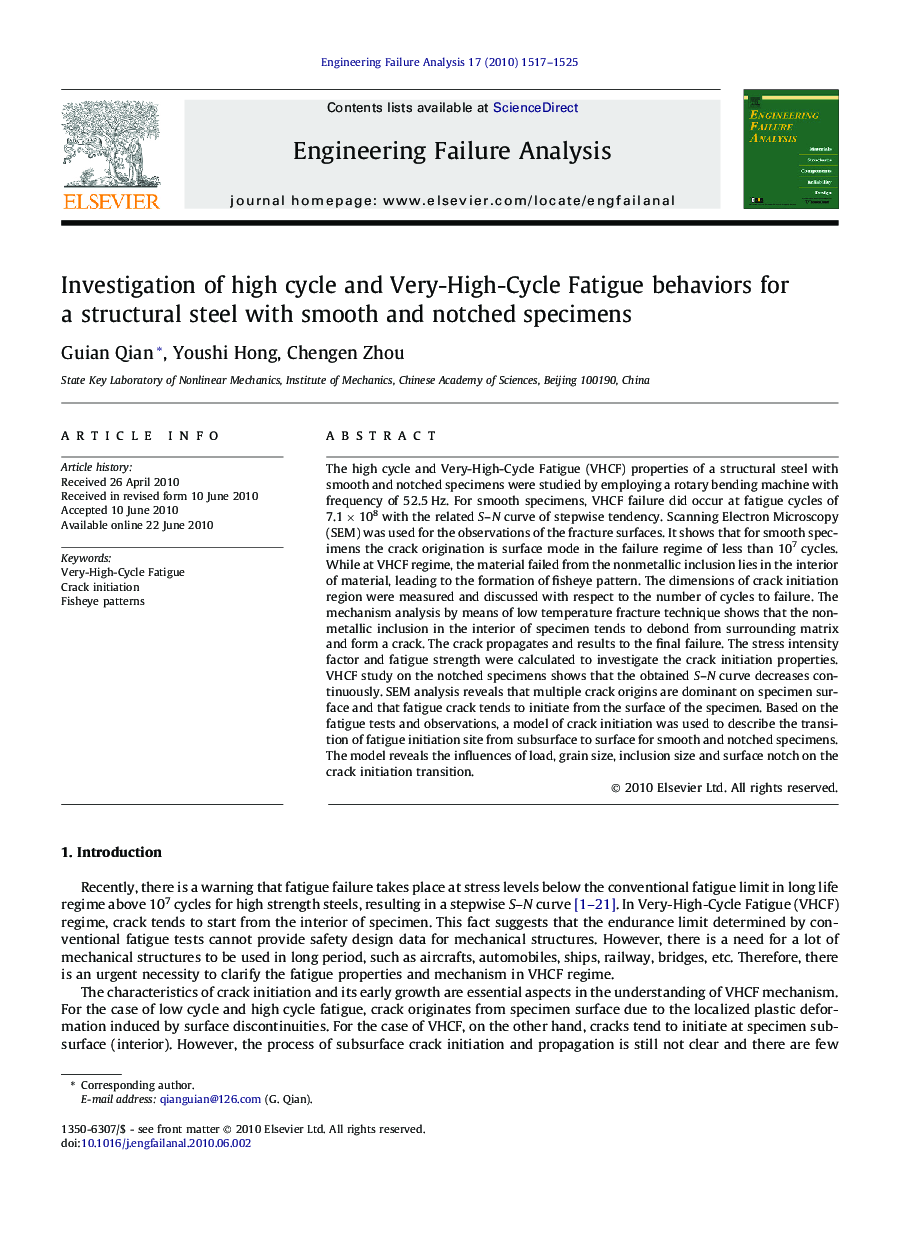| Article ID | Journal | Published Year | Pages | File Type |
|---|---|---|---|---|
| 769890 | Engineering Failure Analysis | 2010 | 9 Pages |
The high cycle and Very-High-Cycle Fatigue (VHCF) properties of a structural steel with smooth and notched specimens were studied by employing a rotary bending machine with frequency of 52.5 Hz. For smooth specimens, VHCF failure did occur at fatigue cycles of 7.1 × 108 with the related S–N curve of stepwise tendency. Scanning Electron Microscopy (SEM) was used for the observations of the fracture surfaces. It shows that for smooth specimens the crack origination is surface mode in the failure regime of less than 107 cycles. While at VHCF regime, the material failed from the nonmetallic inclusion lies in the interior of material, leading to the formation of fisheye pattern. The dimensions of crack initiation region were measured and discussed with respect to the number of cycles to failure. The mechanism analysis by means of low temperature fracture technique shows that the nonmetallic inclusion in the interior of specimen tends to debond from surrounding matrix and form a crack. The crack propagates and results to the final failure. The stress intensity factor and fatigue strength were calculated to investigate the crack initiation properties. VHCF study on the notched specimens shows that the obtained S–N curve decreases continuously. SEM analysis reveals that multiple crack origins are dominant on specimen surface and that fatigue crack tends to initiate from the surface of the specimen. Based on the fatigue tests and observations, a model of crack initiation was used to describe the transition of fatigue initiation site from subsurface to surface for smooth and notched specimens. The model reveals the influences of load, grain size, inclusion size and surface notch on the crack initiation transition.
